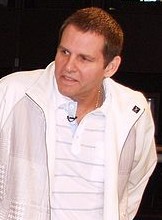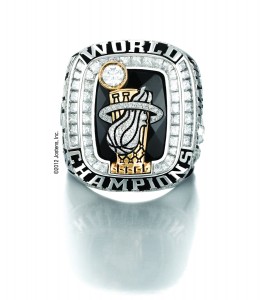 This summer, when your favorite team’s owner or GM tells you a certain player is financially out of reach, here’s how you know he is lying.
This summer, when your favorite team’s owner or GM tells you a certain player is financially out of reach, here’s how you know he is lying.
His lips are moving.
NBA business is booming, folks. And not just for the so-called big markets. Take a quick look at the conference finals, which feature four teams from middle to small markets collecting millions for every home playoff game.
Take a look at the Sacramento Kings, who were just sold for a record $525 million even though they haven’t been in the playoffs in seven years and play in an outdated arena in a small market.
By the way, the losing bid for the Kings was $625 million. But take heart, Seattle. You remain a highly viable candidate for expansion, a much bigger pocket-liner for current owners than a relocation fee.
Take a look at the CBA, which has increased the owners’ share of basketball-related income from 43 percent to as much as 51 percent; reduced the lengths and raise amounts on contracts already equipped with a ceiling; plans to triple revenue sharing; and contains the looming supertax, which already is narrowing the gap between the so-called haves and have-nots.
Nowhere is that more evident than on the court right now. You may think of Miami as a large, vibrant city, and it is. It also ranks 16th in terms of market size in both the United States and the NBA, putting it in the bottom half of the league.
And Miami is by far the biggest market in the conference finals. Next is Indianapolis, 26th in the country and 24th in the NBA. In the West, San Antonio (37th nationwide, 27th NBA) is tangling with Memphis (49th US, 29th NBA).
So these smaller-market teams must have gotten this far by squeezing all they can out of a shoestring budget, right? Don’t make me laugh. All four have team payrolls ranking above their NBA market size.
The Heat are fourth in payroll at $83.8 million – well into tax territory – and already are committed to $85.6 million next season. The Spurs are 12th in payroll at $69.8 million, about a veteran’s minimum contract below the tax threshold.
The Pacers (22nd, $66.1 million) and Grizzlies (25th, $63 million) have a bit more wiggle room but aren’t exactly pinching pennies. Among the four, Memphis is the only team without three eight-figure players, and only because it moved Rudy Gay for multiple players at the trading deadline.
According to Forbes Magazine, the average value of an NBA team increased 30 percent in the year-plus since the resolution of the lockout. The Knicks and Lakers are worth more than $1 billion, rarified air previously exclusive to only NFL teams and the Yankees.
The report said that the Heat made $14.9 million, the Spurs made $14.7 million and the Pacers $10.9 million last season. Yes, last season, when every team was shortchanged eight home games due to the lockout and the product was visibly inferior due to the compressed schedule.
$10.9 million last season. Yes, last season, when every team was shortchanged eight home games due to the lockout and the product was visibly inferior due to the compressed schedule.
The Grizzlies? Well, according to Forbes, they lost $12.5 million last season and have been in the red for 10 straight years. And they still sold for $377 million in October.
Why would Robert Pera pay that much for a business that consistently loses money? Because regardless of the annual ledger, whenever Pera chooses to sell, he will make money. A lot of money. Money we like to call “F**k you money.”
So on Saturday, when Oklahoma City Thunder GM Sam Presti was asked whether the team – 28th in NBA market size, 44th nationwide, 16th in payoll at $68.9 million – would use the amnesty provision on Kendrick Perkins, it was a highly legitimate question.
dzsdsadasdsad
!
^)
^)
Your statement about Miami being the 16th largest market in the U.S. is not accurate. South Florida (Palm Beach to Miami) is 1 metro area separated into 2 TV markets. When those 2 TV markets are added together, you’re looking at the # 7 TV market in the country.